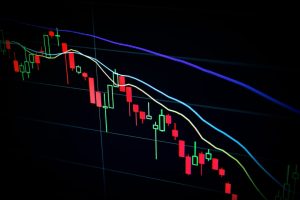Forex trading is one of the most lucrative investment opportunities in the world today. It is a decentralized market where traders buy and sell currencies with the aim of making a profit. One of the most important tools in forex trading is leverage. Leverage is a double edged sword that can make or break a trader.
Leverage refers to the use of borrowed funds to increase the potential return on an investment. In forex trading, it allows traders to trade large amounts of currency with a small deposit. For example, with a leverage ratio of 100:1, a trader can control a position worth $100,000 with a deposit of $1,000. This means that the trader is borrowing $99,000 from the broker to make the trade.
The use of leverage in forex trading has both advantages and disadvantages. On the one hand, it allows traders to increase their potential return on investment. This means that traders can make more money in a short space of time. On the other hand, it increases the risk of loss. This means that traders can lose more money in a short space of time.
The impact of leverage on forex trading is best explained through the experiences of real-life traders. In this article, we will look at the lessons that can be learned from traders who have used leverage in forex trading.
Lesson 1: Use Leverage Responsibly
One of the most important lessons that can be learned from real-life traders is the need to use leverage responsibly. This means that traders should only use leverage when they have a clear understanding of its risks and rewards. Traders should also have a clear strategy in place for managing their risk.
For example, a trader may decide to use a leverage ratio of 50:1. This means that they are borrowing $49,000 from the broker to make the trade. The trader should have a clear strategy in place for managing their risk, such as setting stop loss orders to limit their losses.
Lesson 2: Know Your Limits
Another important lesson that can be learned from real-life traders is the need to know your limits. Traders should have a clear understanding of their risk tolerance and trading goals. This means that they should only use leverage that is within their comfort zone.
For example, a trader may have a risk tolerance of 2% per trade. This means that they are willing to risk 2% of their trading account on each trade. The trader should only use leverage that is within this limit.
Lesson 3: Don’t Chase Profits
Another important lesson that can be learned from real-life traders is the need to avoid chasing profits. Traders should not use leverage to try and make quick profits. This is because leverage increases the risk of loss.
For example, a trader may decide to use a leverage ratio of 100:1 to try and make a quick profit. This means that they are borrowing $99,000 from the broker to make the trade. If the trade goes against them, they could lose all of their deposit and owe the broker an additional $98,000.
Lesson 4: Manage Your Emotions
Finally, real-life traders have learned the importance of managing their emotions when using leverage. Leverage can amplify the emotional highs and lows of trading. Traders should have a clear strategy in place for managing their emotions, such as taking breaks from trading and using stop loss orders.
In conclusion, leverage is a powerful tool in forex trading that can make or break a trader. Real-life traders have learned valuable lessons about the impact of leverage on forex trading. Traders should use leverage responsibly, know their limits, avoid chasing profits, and manage their emotions. By following these lessons, traders can increase their chances of success in forex trading.






